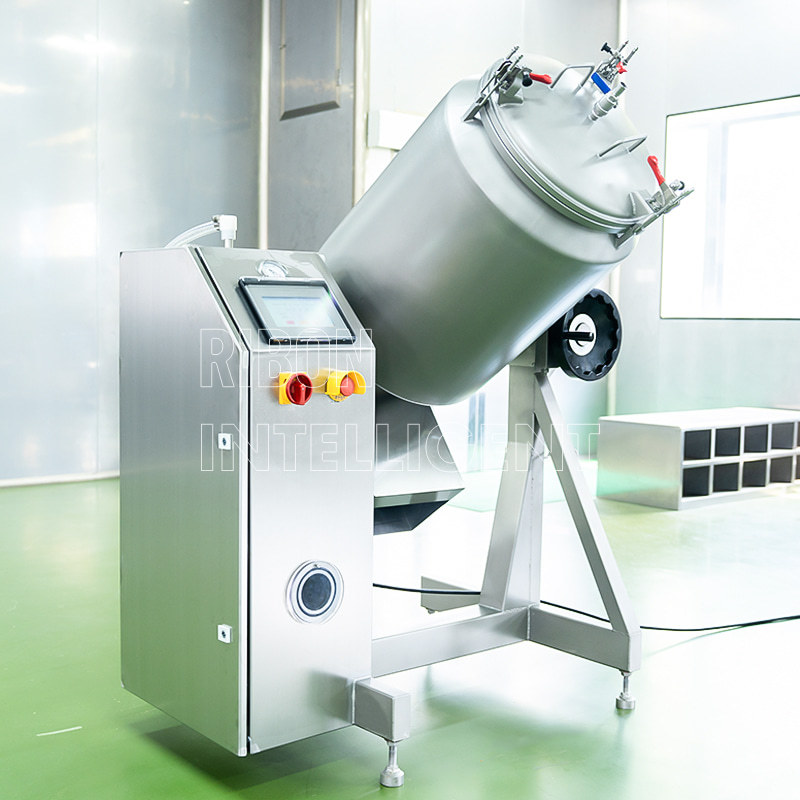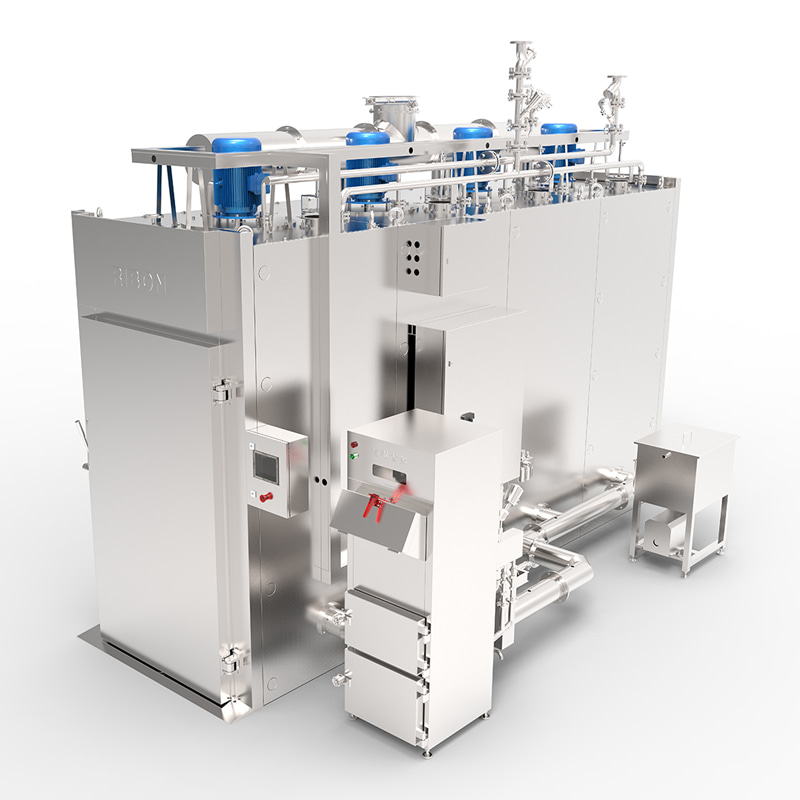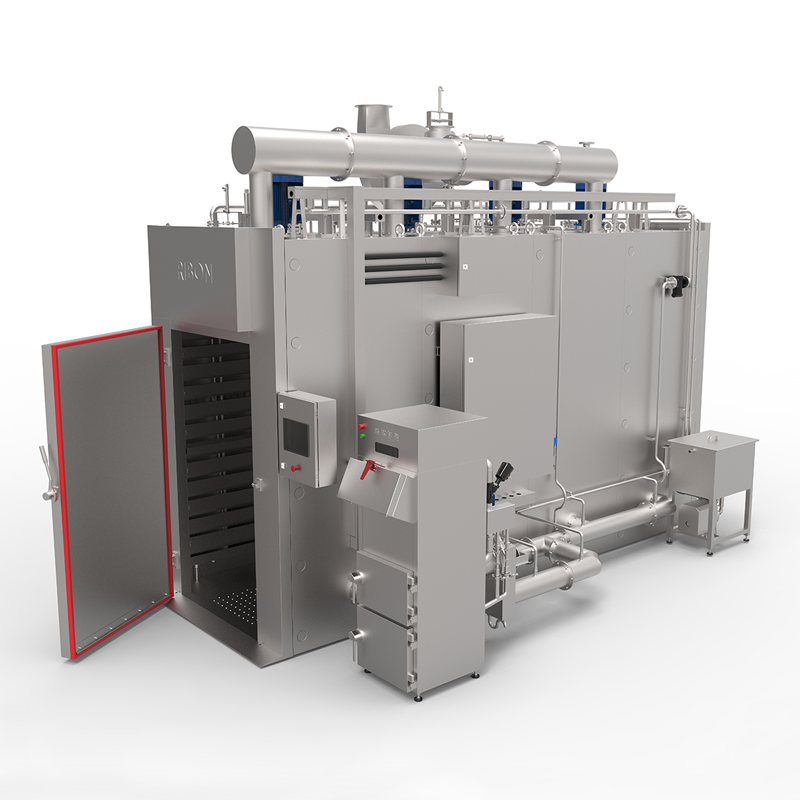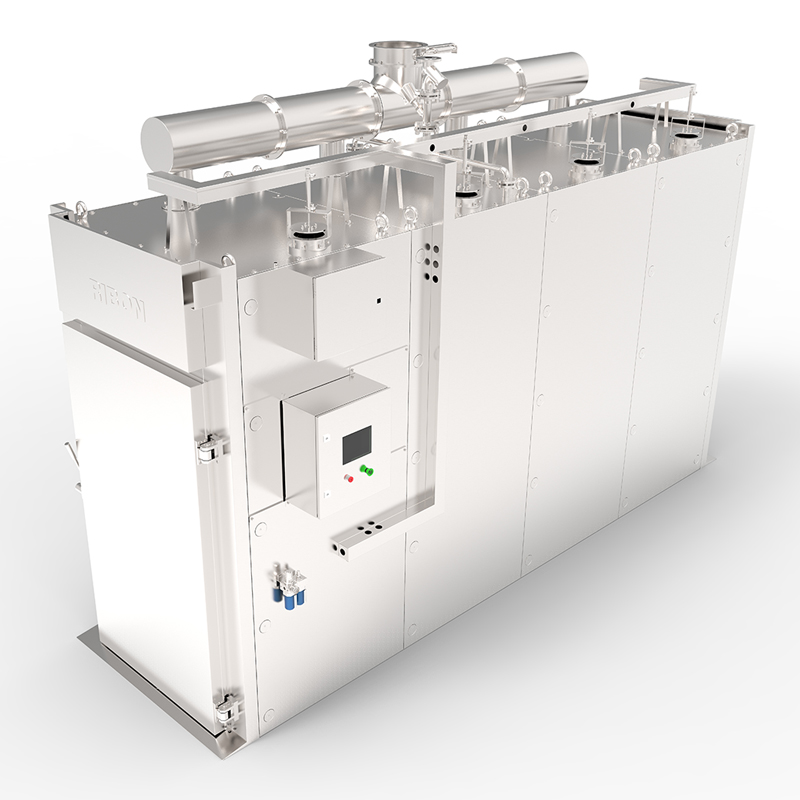A vacuum tumbler is a crucial piece of equipment in the meat processing industry. It uses a combination of physical impact and vacuum pressure to marinate and tenderize meat products, significantly improving their quality, texture, and water retention.
The Core Principles of Vacuum Tumbling
The core working principle of a vacuum tumbler can be broken down into two main components: vacuum action and physical tumbling.
1. Vacuum Action
Before the tumbling process begins, the machine's drum is placed under a vacuum. This serves several key purposes:
-
Accelerates Marinade Penetration: In a vacuum environment, the capillaries and muscle fibers within the meat blocks slightly expand, creating tiny gaps. This allows the marinade (brine, spices, etc.) to penetrate the meat more quickly and evenly. It's like "opening channels" for the marinade, which drastically reduces marinating time.
-
Inhibits Microbial Growth: Most bacteria and microorganisms cannot survive or reproduce in oxygen-deprived environments. The vacuum effectively inhibits their growth, which extends the shelf life of the meat and reduces the need for preservatives.
-
Improves Meat Tenderness: The vacuum helps remove air from the meat blocks, preventing fat oxidation. It also allows the muscle fibers to relax and expand more effectively during the tumbling process, which in turn enhances the meat's tenderness.
2. Physical Tumbling
Once the vacuum is established, the drum begins to rotate at a set speed and direction. The drum is typically equipped with specially designed paddles or baffles. These features create a physical action of lifting, dropping, massaging, and compressing the meat blocks as the drum rotates.
-
Protein Extraction: The physical tumbling promotes the extraction of muscle fiber proteins. These dissolved proteins have a strong adhesive quality and form a "protein glue" on the surface of the meat. This layer effectively traps moisture and marinade inside the meat blocks, significantly improving product yield and water retention.
-
Meat Tenderization: The continuous physical action helps break down some of the muscle fibers, making the meat structure looser and more tender.
-
Uniform Mixing: The tumbling process ensures that the meat, marinade, and spices are thoroughly and evenly mixed, guaranteeing a consistent marinating effect for every piece of meat.
Why Use a Vacuum Tumbler?
The benefits of vacuum tumbling are clear:
-
Increased Yield: By promoting protein extraction and enhancing water retention, the machine significantly increases the weight and final yield of the meat product.
-
Improved Texture and Flavor: More even marination leads to better texture and a richer, more consistent flavor.
-
Reduced Marinating Time: Compared to traditional static marination, vacuum tumbling can shorten the process from hours or even days to just tens of minutes.
-
Extended Shelf Life: The vacuum environment inhibits bacteria, helping to extend the meat product's shelf life.
Types and Applications of Vacuum Tumblers
There are various types of vacuum tumblers on the market, ranging from small laboratory models to large-scale industrial production machines. They are typically classified by capacity, structure (e.g., horizontal, vertical), and control method (e.g., manual, PLC automatic control).
These vacuum meat tumblers are widely used in the production of a wide range of meat products, including but not limited to:
-
Sausages and hams
-
Bacon and lunch meat
-
Poultry products like chicken wings and drumsticks
-
Tenderizing and marinating whole cuts of beef and pork
-
Chinese-style braised meats and cooked dishes
In short, a vacuum tumbler combines the dual effects of vacuum and physical tumbling to dramatically improve the efficiency and quality of meat marination. It provides a solid technical foundation for the standardization and large-scale production of modern meat processing.





 English
English русский
русский Español
Español عربى
عربى











